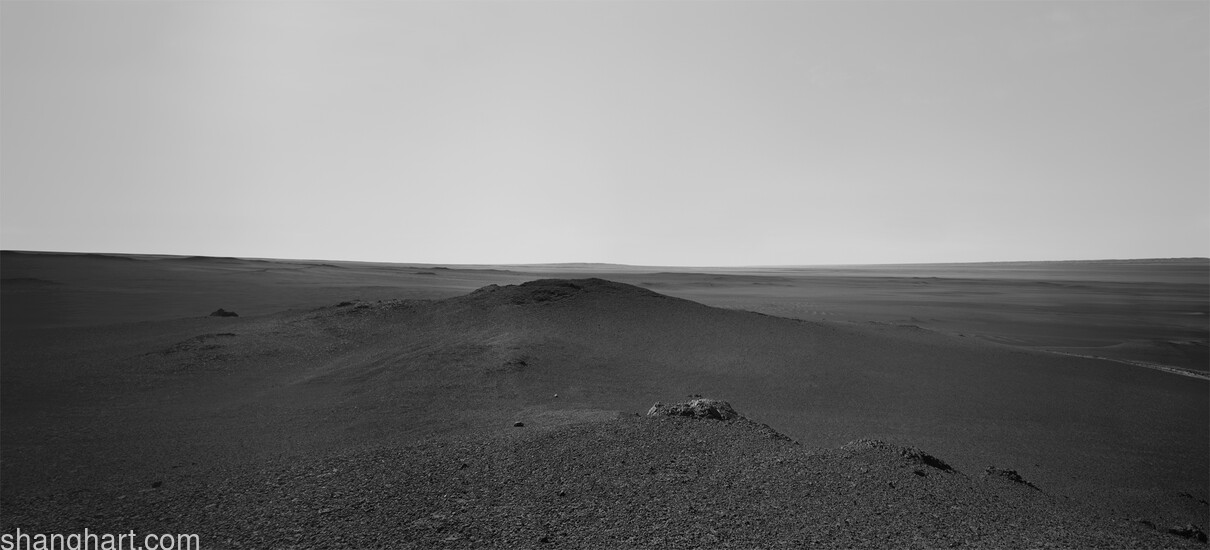“Gravel Fathoms the Sea” was shot in the Heigebi (which means black Gobi in Chinese) near Dunhuang. Scientists believe that the Hexi Corridor area that Jiang photographed was once an ocean 200 million years ago, and now it uplifts into a high and dry Asian belly. 2 million years ago, it used to be a alluvial plain, which was full of rivers and lakes. While it is now a sun-dried black-colored Gobi without a drop of water. In cold nights, the gravel here will absorb the moisture in the air. During the daytime, the moisture evaporates under the burning sun. Under this cyclic process, the iron-bearing manganese in the gravel gradually dissolves, overflows and precipitates on the surface of the gravel. This layer of black iron oxide and black manganese oxide film solidly wrapped with the gravels.
This time his works are presented in landscape photography and the image of “human” is hidden behind his works. It doesn’t mean that “human” does not exist because they are invisible in the photos. No matter from the perspective of the historical background of the area, or the artist holding the camera, or the audiences gazing at the photos, they are all sailing on a variety of waterways in the sea of meaning and seeking their own pearls.
Nature is included in landscape but not equal to landscape. Landscape consists of two eternal elements – nature and human. In today's highly modernized society, it is difficult to find a pure natural landscape. All the common landscapes can be called political landscapes. While, in Heigebi with hidden stories, politics, landscape and culture come in one.


